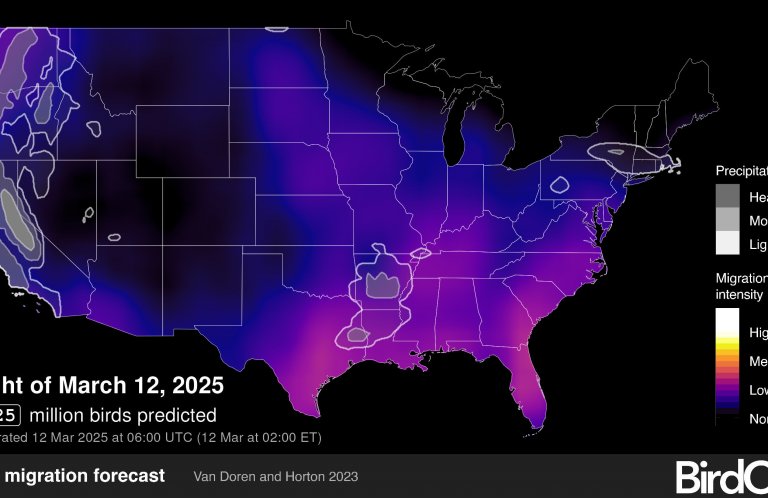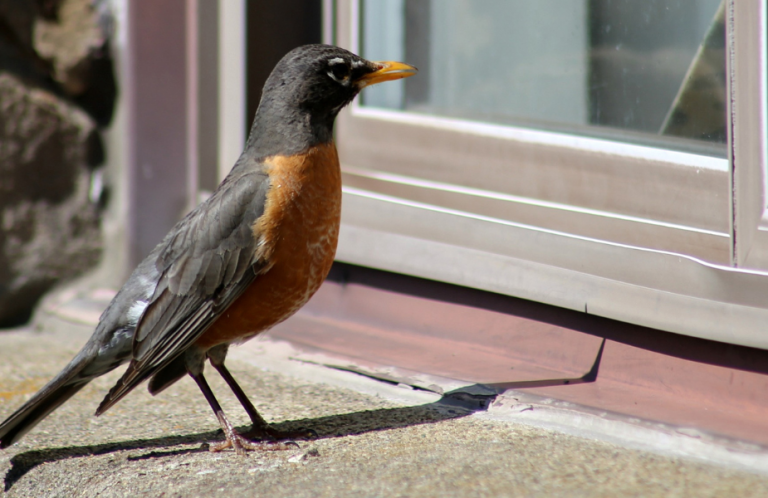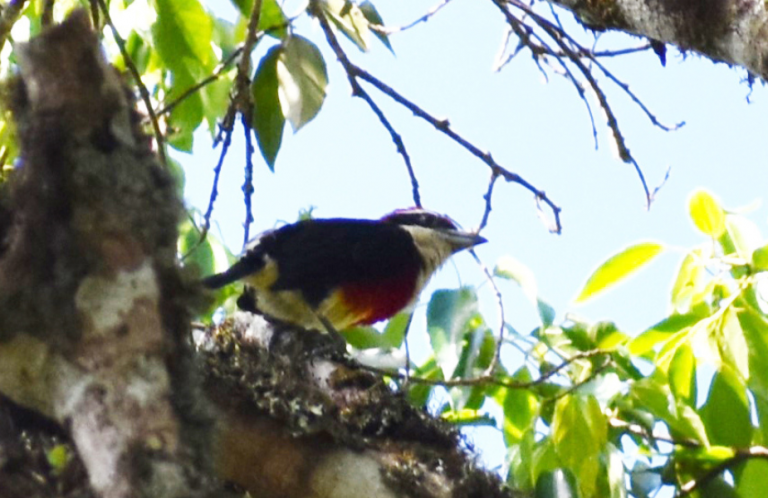ABC Birding: Kirtland's Warbler Management Areas, Michigan
In “ABC Birding” we take you to a birding site benefiting from ABC and partners' conservation efforts. Before traveling, please consider your health, CDC guidelines, and local restrictions.
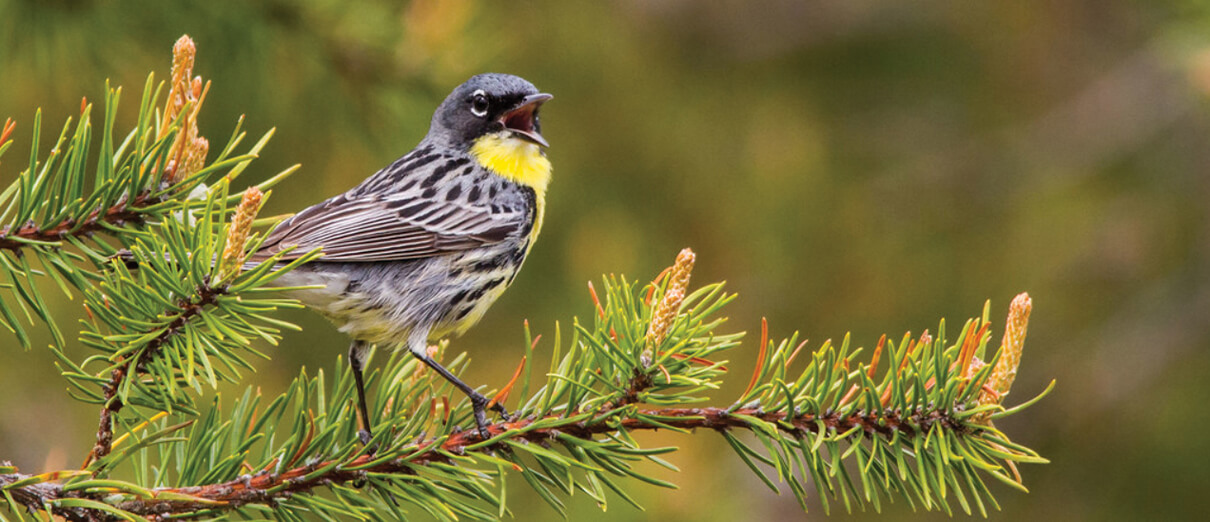
Lay of the Land: Kirtland's Warbler Management Areas (KWMAs) comprise 23 units of about 220,000 acres on Michigan Department of Natural Resources, U.S. Forest Service, and U.S. Fish and Wildlife Service lands in the northeastern Lower Peninsula of Michigan. Known as Jack Pine plains, these areas sit on sandy soils left after glaciers receded about 10,000 years ago. They are mostly covered with Jack Pine, Northern Pin (or Jack) Oak, and scattered Red Pine. Most of the world's Kirtland's Warblers breed in the Jack Pine plains of Michigan's Lower Peninsula, but small numbers of this recently delisted songbird also nest in Wisconsin, Michigan's Upper Peninsula, and Ontario, Canada.
Glacial moraines, covered with oaks and Red and White Pines, border the Jack Pine plains, and both habitats are enriched by scattered wetlands and small lakes. Clear, groundwater-fed streams and rivers, lined with Balsam Fir, Northern White Cedar, and spruce, flow through the sandy soils; these conifer-dominated areas harbor breeding Winter Wrens, Veeries, Evening Grosbeaks, American Redstarts, Mourning Warblers, and many other species not typically found on the Jack Pine plains.
Focal Birds: While the Kirtland's Warbler is the focal bird of KWMAs, many other species breed in the extensive Jack Pine plains. Common Nighthawks, Upland Sandpipers, Vesper Sparrows, and Brewer's Blackbirds can be found in the most open areas created shortly after wildfire or timber harvest. Kirtland's Warblers occupy sites where Jack Pines reach heights of five to 16 feet. In some of these areas, they are the most common bird. Nashville Warblers, Chipping Sparrows, Brown Thrashers, Hermit Thrushes, Clay-colored Sparrows, Lincoln's Sparrows, Dark-eyed Juncos, and Eastern Towhees are among the species also commonly associated with Kirtland's Warbler habitat.
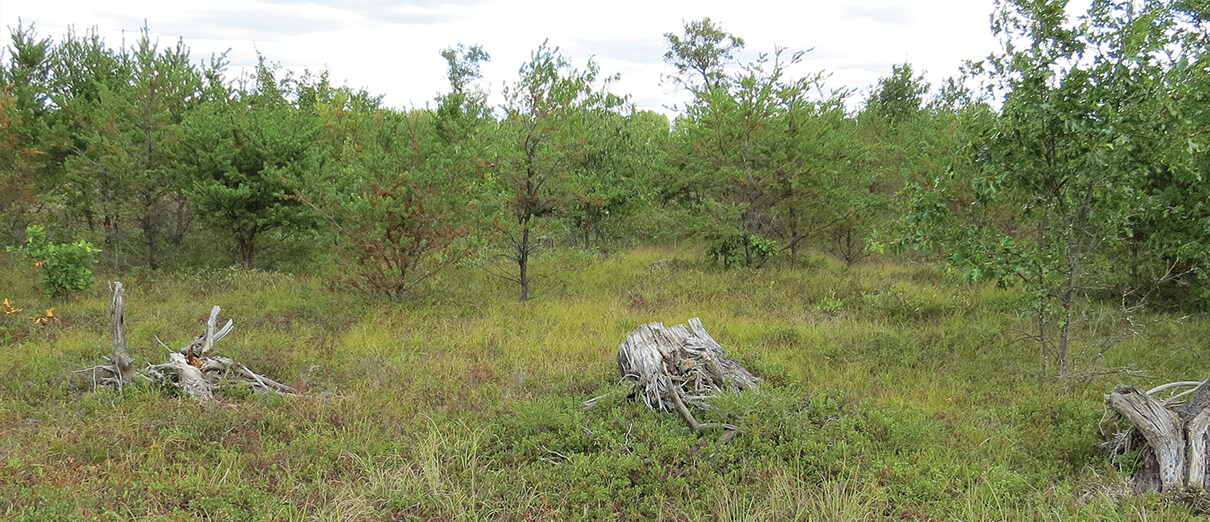
Once Jack Pines reach 20 to 50 feet tall or higher, the habitat becomes the domain of the Spruce Grouse, Yellow-rumped Warbler, Pine Warbler, as well as the more widespread Northern Flicker, Black-capped Chickadee, Blue Jay, and Ovenbird.
Other Wildlife: White-tailed Deer, Thirteen-lined Ground Squirrel, and Red Squirrel are commonly seen, while Snowshoe Hare, Black Bear, Coyote, and American Badger are more often detected by their tracks or dens. On spring evenings, choruses of Spring Peepers and Midland Chorus Frogs may be loud. Brook Trout and other stream- and river-dwelling species benefit from the filtering effects of the sandy soils. Many other species benefit from Jack Pine forest management, including rare plant and insect species like the Hill's Thistle and Secretive Locust.
When to Visit: The best time to visit is from mid-May through June, when Kirtland's Warblers, other bird species, and amphibians are vocalizing and most conspicuous. By mid-July, most singing has stopped. Hunting for Ruffed Grouse, Snowshoe Hare, and White-tailed Deer runs from mid-September through early December. Although access to occupied Kirtland's Warbler areas is often restricted from May through August, Kirtland's Warbler tours are provided and scheduled for the optimal times to see the Kirtland's Warbler and associated species. Tours are provided by the U.S. Forest Service and Michigan and AuSable Valley Audubon Societies.
Conservation Activities: In the KWMAs, large tracts of Jack Pine are intensively managed for Kirtland's Warblers. Tracts of hundreds to thousands of acres are harvested and then replanted with Jack Pine on a rotating basis to ensure at least 1,000 pairs of Kirtland's Warblers have suitable nesting habitat. Once the trees reach approximately 50 years old, they are harvested and the process of replanting begins again. The Kirtland's Warbler Conservation Team, a group of wildlife biologists, foresters, researchers, and conservationists, including the author and other ABC staff, coordinates and implements the Kirtland's Warbler program.
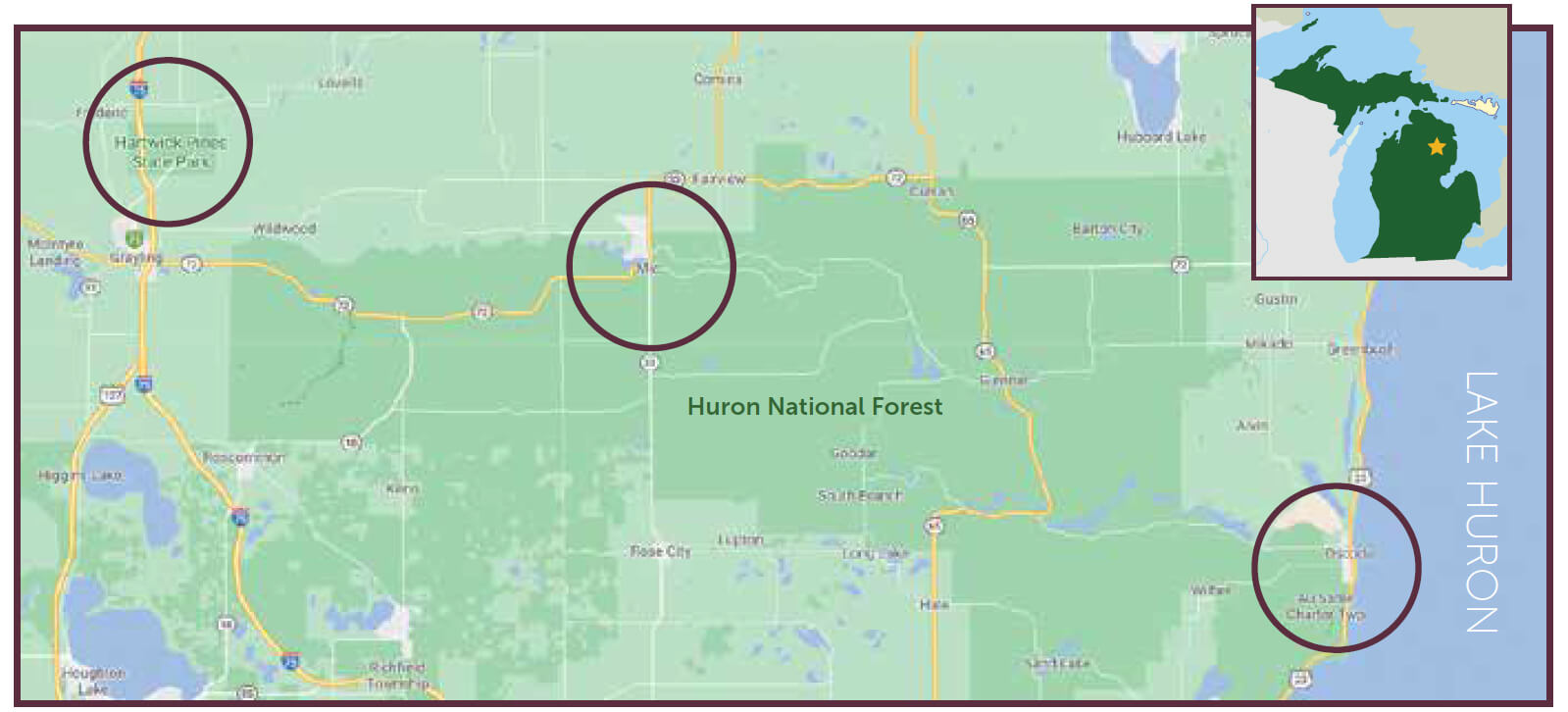
tour.
Directions: Areas occupied by Kirtland's Warblers are constantly shifting because of the birds' specific habitat requirements. To minimize impact to this species, visitors seeking to observe Kirtland's Warblers should join a guided Kirtland's Warbler tour, if possible. Tours are typically operated from mid-May through June from the Mio Ranger District of the U.S. Forest Service in Mio, Michigan (email here); or contact Michigan Audubon Society regarding tours from Hartwick Pines State Park, near Grayling, Michigan; or AuSable Valley Audubon Society, which leads tours from Oscoda, Michigan.
Check the respective dates, times, and fees for tours, as they change from year to year. Each of the websites listed here provides specific information on tours and locations where tours originate. Note that tours were not available in 2020 due to the pandemic, but they are expected to resume as it becomes safe to run them. Information on local recreational activities, including a self-guided Jack Pine Wildlife Viewing Tour, is available here.
ABC thanks the Harry A. and Margaret D. Towsley Foundation and Lynn and Stuart White for their support of the Kirtland's Warbler program.
 | Dave Ewert is ABC's Kirtland's Warbler Program Director and Conservation Specialist. |





































